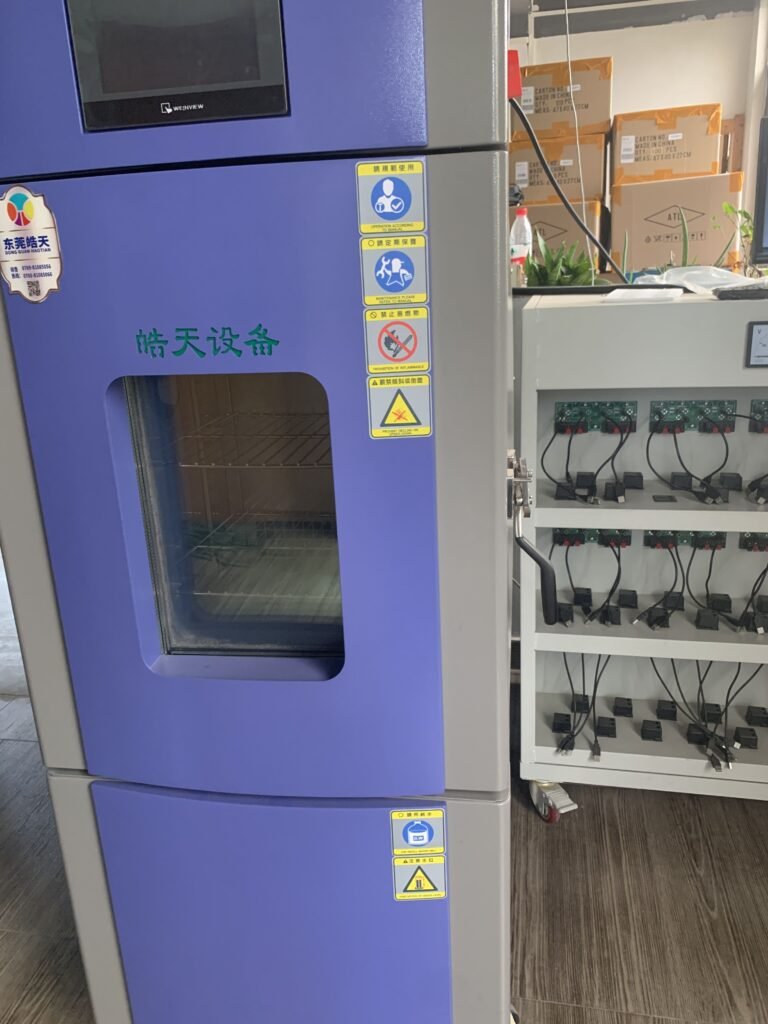Electronic products have become our indispensable daily necessities. Some people may wonder whether the charger is safe to charge at high temperature and low temperature? Mobile phone chargers and charging cables are subject to high and low temperature tests before they leave the factory. When the product is charged without any problems, what is the test standard for the high and low temperature test?

What is a high and low temperature test?
High and low temperature test is actually a common type of climate and environmental test used in testing. The high and low temperature test mainly assesses the environmental tolerance and environmental adaptability of the complete equipment, components, electronic components, etc. under high and low temperature environmental conditions, and the impact on the performance of the equipment during storage and operation.
As there are more and more manufacturers of mobile phone chargers on the market, in order to standardize their technical requirements and test methods, my country has made relevant environmental test regulations for the temperature and humidity test requirements of mobile phone chargers. According to the "GB/T32638-2016" According to specifications, mobile phone chargers should be tested in the following temperature and humidity environment.

- Low temperature test:
The power adapter has been stored at a low temperature of (-40±3)°C for 16 hours. After being restored under normal atmospheric conditions, the mechanical structure should not be damaged, and the electrical performance should meet the relevant requirements of the output voltage, current and output voltage ripple. - Low temperature working test:
After the power adapter has been subjected to a low temperature test of (-10±3)°C for 2h under working conditions, the electrical performance should meet the relevant requirements of the output voltage, current and output voltage ripple. - High temperature test:
The power adapter has been stored at a high temperature of (70±3)°C for 16 hours. After being restored under normal atmospheric conditions, the mechanical structure should be undamaged, and the electrical performance should meet the relevant requirements of the output voltage, current and output voltage ripple. - High temperature working test:
After the power adapter has been subjected to a high temperature test of (40±3)°C for 2h in the working state, the electrical performance should meet the relevant requirements of the output voltage, current and output voltage ripple. - Damp heat test:
After the power adapter has been subjected to an environmental test of (40±2)°C, the upper limit of relative humidity (93+2)% / lower limit (93-3)% for 48 hours, the mechanical structure should not be damaged, and the electrical performance should comply with the output voltage, current and output Relevant regulatory requirements for voltage ripple.
This is the test equipment for high and low temperature testing in the production workshop of our IDEAL company

The high temperature test is generally to place the product in a constant temperature box or a constant temperature room for testing. The temperature of the medium is measured at different positions with a thermometer, and the arithmetic average is taken. However, the temperature in the box is required to be as uniform as possible, and the product is heated by the flow of hot air, and the test sample should not be close to the heat source. In order to reduce the influence of radiation, the wall temperature of the test chamber should not be higher than 3% of the ambient temperature. The low temperature test is generally carried out in a low temperature box (chamber), and its temperature is generally obtained by artificial refrigeration. In the effective working space of the low temperature box, forced air circulation is used to maintain the uniformity of low temperature conditions.
The high and low temperature test of electronic and electrical products is divided into high and low temperature storage test and high and low temperature running test. High and low temperature storage means that the product is not powered on and is tested in a non-working state. High and low temperature operation is to supply power to the product and test under the working condition of the product.
High temperature test:
Uncharged storage: 70℃, keep for 48h, recover for 2h, test whether the equipment is working normally;
Working: 55℃, keep working, observe whether the equipment is working normally;
According to standards: GJb 150.3A-2009, GBT2423.2, etc.

Low temperature test:
Uncharged storage: -40℃, keep for 24h, recover for 2h.
Test whether the equipment is working normally;
Working: -20℃, keep working, observe whether the equipment is working normally;
Reference standards: GJb 150.4A-2009, GBT2423.1, etc. Damp heat test: This test should be carried out in accordance with GB/T 2423.4 Test Db. Except for performance testing, the device under test shall not be energized. Temperature: +55℃ and +25℃; Number of cycles: 2 (respiratory effect); Time: 2×24 h.

High and low temperature test operation method
1. First adjust the temperature of the box to 25℃±3℃, and keep this value, adjust the relative humidity to 45 to 75% for 2 h to 6 h to stabilize the temperature. In the last 1 h, increase the relative humidity in the box to not less than 95%, and keep the temperature at 25℃±3℃.
2. After the stabilization phase, the cycle starts, and the box temperature rises continuously from 25℃±3℃ to 55℃±2℃ within 2.5 h~3 h. During this period, the relative humidity is not less than 90% in the last 15 minutes. , The relative humidity should not be lower than 95% during the heating stage, so as to cause condensation on the surface of the test sample, but excessive condensation should not be produced on the large-scale test sample. Then keep it under a high temperature and high humidity environment with a temperature of 55℃±2℃ until 12 h±0.5 h from the beginning of the cycle. The relative humidity at this stage shall be (93±3), except for not less than 90% within 15 minutes at the beginning and the end.
3. Then within 3 h ~ 6 h, reduce the box temperature from 55 ℃ ± 2 ℃ to 25 ℃ ± 3 ℃. The temperature drop rate for the first 1.5 hours was 10°C/h, and the relative humidity during this period was not less than 90% in the first 15 minutes, and was not less than 95% at other times.
4. After cooling down, keep the temperature at 25℃±3℃, and the relative humidity should not be lower than 95%. A cycle of 24 h is counted from the beginning of the cycle.
The basic requirements that the product should meet after the high and low temperature test:
The quality of the product after the high and low temperature test is generally tested according to the product technical conditions or the requirements specified in the technical agreement. For example, the impact of high temperature environment on the performance of motor products is manifested in the increase of the resistance of conductive materials, resulting in changes in current. For motors with accuracy requirements, it will also affect accuracy. Therefore, after the high temperature test, the insulation resistance should be measured in the test box, and its value should not be less than 5 MΩ. At the same time, other properties of the motor should be tested. Under normal circumstances, if the product can meet the following basic requirements after temperature test, it is considered that the product meets the requirements of high and low temperature.

1) The surface of the product has no defects such as damage or deformation. If it is a coated surface, there should be no peeling, blistering or discoloration of the coating.
2) For plastic parts, there are no cracks, blisters and deformation on the surface.
3) Rubber products are free from aging, bonding, softening and cracking.
4) There is no flow phenomenon in the welding part of the product.
5) Product performance data and structural functions meet the requirements of technical specifications, and there should be no other defects that hinder the normal operation of the product.

We are producing chargers, and we will conduct strict tests on the products before shipment. The high temperature and low temperature test is only one of the inspection links of our QC quality inspection department. We will also do a series of other quality tests. I will post in other articles in the future.


